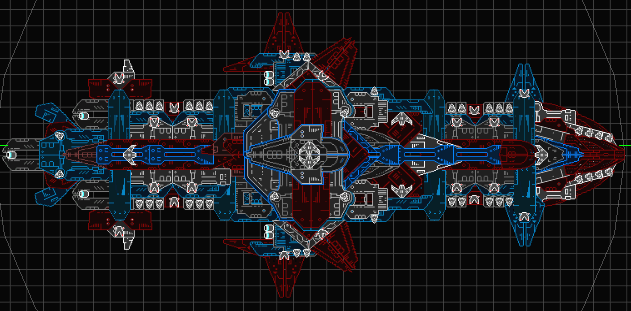Warning: Incoming wall of text.

Welcome to space borne biology, 101.
Today, we are studying the physiology of the Leviathan, a native inhabitant of the otherwise uninhabited sector C-317. We'll take note of some of the more unusual aspects today and cover them in further depth at the next broadcast.
Starting at the caudal arms, you can see several small blisters. These blisters are tied in with the various sensory organs of the beast and provide a defensive means against unwelcome parasites and small inbound objects such as asteroids or, in those cases where warships are encountered, missile weapons.
Moving along the outermost arms towards the main core you can see a series of other defensive organelles. These, when stimulated, project a mesh of nearly indestructable fiber over any section of the creature that has been attacked.
On the next arm in, you can see evidence of one of many symbiotic relationships this being enjoys. In this case, bore-wyrm colonies. These creatures bore deeply into the flesh and have been known to launch their spawn at any thing that moves in an effort to propagate the species.
On the next arm, you'll note several bio-plasma vents. A by product of the metabolism, bio-plasma is stored here as a more vigorous means of self defense. The Leviathan can launch "pods" of this matter in an effort to defend itself or to cover it's retreat, should it's size not prove intimidating enough.
You'll note that the abdomen has developed similar blister organs like the outermost tentacles. This is a late stage of the species reproductive cycle, shortly the thorax of this specimen will seperate from the parent into a juvenile Leviathan, with the two sides of the thorax splitting to form the first pair of arms of the young offspring.
On the dorsal carapace, you'll see evidence of another symbiotic infestation. In this case the Space Wasp. Whole swarms of these creatures can exist within the body of the Leviathan, ready to swarm at a moments notice in defense of their hive.
Immediatly infront of the dorsal carapace you'll see yet another of the creatures impressive array of defensive organs. This one in particular is capable of healing nearly any damage that the Leviathan absorbs. The exact science behind this healing mechanism is beyond the scope of an introductory course as this one of course but still, fascinating.
At the head end, you'll note an array of organs growing on the two smallest set of arms. These are used to cut any captured objects into pieces small enough to be ingested, or in combat as a weapon of last resort.
The final point of interest for todays lesson is on the two forward most arms. These organs appear to be related to the defensive organs mentioned earlier, however instead of projecting strands of high tensile strength fiber over the ship in a defensive effort, they project their strands outward to capture any stray objects in the vicinity, these are then fed into the smaller "feeder" arms for processing into consumble sizes.
That's it for today's broadcast. Review the entries listed on the syllabus for the next class and answer all prime-numbered questions presented in the text.
Alternate image
Ship link
I apologize if this breaks your h-scroll.
Also, if it looks familiar, that's because I based it on an earlier space squid I posted
here.


















